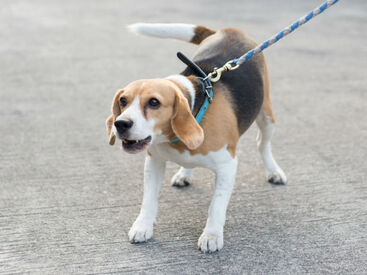K9 Elite Dog Training LLC
 Like a case of Dr. Jekyll and Mr. Hyde, the leash-aggressive dog is calm, cool, and downright polite when walking among people or around dogs off-leash. But hook on a leash, and he lunges, barks, and snaps at the sight of another dog. Has this scenario reduced you to mapping out walks where you know you won’t run into other dogs? Although leash-aggressive dogs rarely follow through with a bite, the experience is frightening and embarrassing enough to make their owners decide to limit or eliminate walks altogether. But that doesn’t have to be the case if you understand the causes and solutions for this type of behavior. A combination of frustration and tension, leash aggression is a common problem. Many dogs that show these traits crave interaction with other dogs, but most have less-than-stellar canine social skills for creating a successful meet and greet. Much like a child who runs onto a playground and puts another child in a headlock as a way of saying, “Hey, let’s be friends!” a dog lacking social skills may lunge and bark at a passing dog instead of using subtle signs to signal their desire to form a relationship. When their owners witness this behavior they (understandably) pull their dogs away and avoid exposing them to social interactions with other canines. But this ensures that their dog will never learn how to correctly interact with other dogs, and dooms them and their dog to a life devoid of canine friendships. Call in the Experts While it sounds counter-intuitive, the road to fixing this issue is actually off-leash interactions with dogs. But don’t do this without seeking the help of a professional dog trainer, because before you take this step, you must learn how to correctly read the native language of dogs--body language! If you don’t know what your dog or the other dog is saying with their body signals, you may see play when it’s really tension, and tension when it’s really dog play. In addition, a qualified trainer can help you evaluate your dog to see if this is a typical case of leash aggression, or if there’s something else happening. Whenever I’m handling this type of dog behavior problem, I always make sure that the dog has had a complete veterinary exam to rule out any medical causes for the behavior. Turn to Treats to Distract In the meantime, start decreasing your dog’s frustration when he’s on leash and spies another dog by removing the tension from your leash. To do that, you’re going to teach your dog that when he sees another dog, he’ll be rewarded for looking at you. This training game is called “Cookie Dog,” and starts with you and your dog sitting on a park bench in an area where there are a small number of dogs out and about. Do your research in advance and scout out a few places without your dog. Your dog should be very hungry (playing this before mealtimes is ideal) and you should have a large amount of high-value types of dog treats (steak, chicken, tortellini) with you. Keep in mind that the treats you always use when you’re training at home will be less exciting when you’re outside and there are lots of distractions. And you already know how rewarding he finds other dogs, so be prepared to break out the good stuff! Once you’re at the bench with your on-leash hungry dog and your fabulous treats, wait for a dog to come by. The minute you see your dog notice him, say “Cookie dog!” and put a treat in front of his nose. Feed him treat after treat until the dog has gone by. At that point, no more reward—until the next dog shows up. This is going to teach your dog that the arrival of another dog means you’re going to pay out treats like a hot slot machine in Vegas. The result should be that your dog sees the other dog, turns to you, and expects a reward. Keep up this game for a week or so. Once your dog consistently looks to you when another dog enters the picture, you can then ask your calm and focused dog to “Sit” and “Stay.” After a few weeks of playing the Cookie Dog game on a bench, start playing it on the move. It’s crucial that you are focused on your dog and the presence of other dogs while on the walk. That means that during this phase, keep your mind in the game and not on texting, talking on the phone, or listening to music. Besides, you’ll be meeting so many new people and their dogs, you won’t have time to do anything else. Getting your dog to focus on you when other dogs appear is the first step toward maintaining his Dr. Jekyll personality on leash. With practice and some professional input, you can keep him from turning into Mr. Hyde when other dogs appear. https://www.akc.org/expert-advice/training/how-to-deal-with-leash-aggression Comments are closed.
|
k-9 Elite Dog TrainingK-9 Elite Dog Training 4 Years of service as of 08/7/2017 Veteran Lead ArchivesArchivesCategories
All
|

 RSS Feed
RSS Feed
